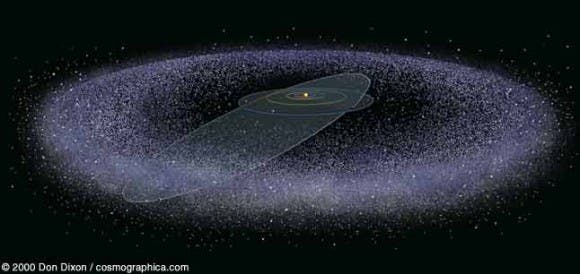The New Horizons spacecraft has recently passed Pluto giving scientists a treasure trove of information to study, and is now well on its way to the inner Kuiper Belt. But what is the Kuiper Belt? Is it a part of our solar system, what’s in there, and why are we interested in that? Here, we’ll have a look at all those things.
The Belt is a region of the Solar System beyond the eight major planets, extending from the orbit of Neptune (at 30 AU) to approximately 50 AU from the Sun. This chilly expanse holds trillions of objects, remnants of the early solar system which hold valuable information.
The Kuiper Belt consists of small icy bodies which are remnants from the formation of the Solar System some 4.6 billion years ago. These objects, known as Kuiper Belt Objects (KBOs), are composed largely of ices – methane, ammonia and water, similar in composition to comets. They are included in the category of Trans-Neptunian Objects (TNOs), objects further from the Sun than from the orbit of Neptune. The largest body in the Kuiper Belt is also the largest dwarf-planet – Pluto, followed by Eris, Makemake, Haumea, Quaoar, Ixion, and Varuna.
It is similar to the asteroid belt, in that it contains many small bodies, all remnants from the Solar System’s formation. But unlike the Asteroid Belt, it is much larger – 20 times as wide and 20 to 200 times as massive. As Mike Brown explains:
The Kuiper Belt is a collection of bodies outside the orbit of Neptune that, if nothing else had happened, if Neptune hadn’t formed or if things had gone a little bit better, maybe they could have gotten together themselves and formed the next planet out beyond Neptune. But instead, in the history of the solar system, when Neptune formed it led to these objects not being able to get together, so it’s just this belt of material out beyond Neptune.
Short history of the Belt
Soon after the discovery of Pluto, astronomers began to ponder the existence of a Trans-Neptunian population of objects in the outer Solar System – basically, they felt that something is still out there. The first to suggest this was Frederick C. Leonard, who began suggesting the existence of “ultra-Neptunian bodies” beyond Pluto that had simply not been discovered yet. That same year, astronomer Armin O. Leuschner suggested that Pluto “may be one of many long-period planetary objects yet to be discovered.” In 1943, in the Journal of the British Astronomical Association, Kenneth Edgeworth further expounded on the subject. According to Edgeworth, the material within the primordial solar nebula beyond Neptune was too widely spaced to condense into planets, and so rather condensed into a myriad of smaller bodies.
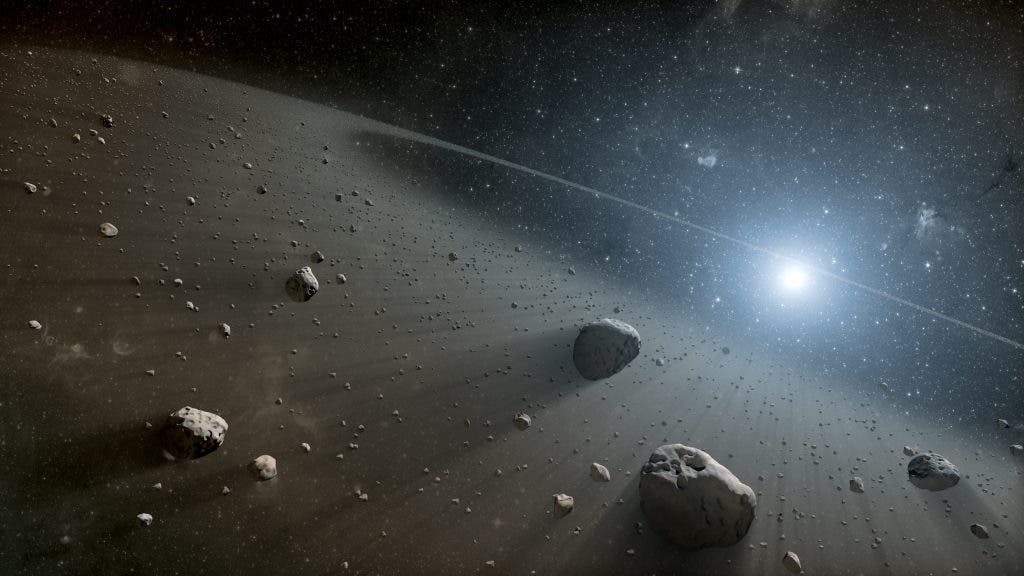
The belt is named after Dutch astronomer Gerard Kuiper, who speculated in an article for the journal Astrophysics in 1951 that a disc similar to what Edgeworth described had formed early in the Solar System’s evolution. Occasionally one of these objects would wander into the inner Solar System and become a comet.
The idea of this “Kuiper Belt” made sense to astronomers. Not only did it help to explain why there were no large planets further out in the Solar System, it also conveniently wrapped up the mystery of where comets came from. Uruguayan astronomer Julio Fernández’s speculated in 1980, in the Monthly Notices of the Royal Astronomical Society, that a comet belt that lay between 35 and 50 AU would be required to account for the observed number of comets. Following up on his work work, in 1988 a Canadian team of astronomers Martin Duncan, Tom Quinn and Scott Tremaine ran a number of computer simulations and determined that the Oort cloud could not account for all short-period comets. With a “belt”, as Fernández described it, added to the formulations, the simulations matched observations.
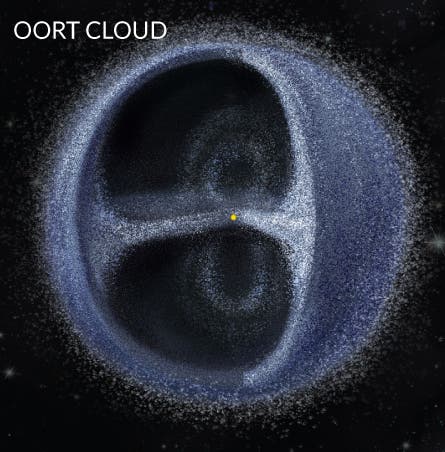
Image via sciencenews
In their 1988 paper, Tremaine and his colleagues referred to the hypothetical region beyond Neptune as the “Kuiper Belt”, apparently due to the fact that Fernández used the words “Kuiper” and “comet belt” in the opening sentence of his paper. While this has remained the official name, astronomers sometimes use the alternative name Edgeworth-Kuiper belt to credit Edgeworth for his earlier theoretical work.
On August 30th, 1992, David Jewitt and Jane Luu announced the “Discovery of the candidate Kuiper belt object” (15760) 1992 QB1. Six months later, they discovered a second object in the region, (181708) 1993 FW.
Interest in the Kuiper Belt grew in the late 1990s, when a number of Trans-Neptunian objects were discovered, confirming the existence of the formation. During that time, NASA instructed the JPL to re-purpose the mission as not only a Pluto but also a KBO flyby. The mission was thus re-branded the Pluto Kuiper Express, after briefly being billed as Pluto Express prior to the revision of the mission.
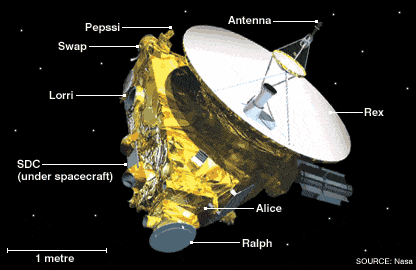
Image via NASA
How it formed
When the solar system formed, much of the gas, dust and rocks pulled together to form the sun and planets. The planets then swept most of the remaining debris into the sun or out of the solar system. But bodies farther out remained safe from gravitational pull of planets like Jupiter, and so managed to stay safe as they slowly orbited the sun. The Kuiper Belt and its compatriot, the more distant and spherical Oort Cloud, contain the leftover remnants from the beginning of the solar system and can provide valuable insights into its birth.
The most crowded section of the Kuiper Belt lies between 42 and 48 times Earth’s distance from the sun, the classical Kuiper Belt. The orbit of objects in this region remain stable for the most part, although some occasionally have their course changed slightly when they drift too close to Neptune.
Kuiper Objects

Image via wikipedia.org
Pluto was the first true Kuiper Belt Object to be seen, although scientists at the time didn’t recognize it as such. The existence of the Belt wasn’t realized until scientists discovered a slow moving, small world in the outer solar system in 1992 (David Jewitt and Jane Luu’s KBO, 1992 QB1.). Other objects soon followed, and astronomers quickly saw that the region beyond Neptune teemed with icy rocks and tiny worlds.
Sedna (sed’nah), about three-fourths the size of Pluto, was discovered in 2004. It is so far out from the sun it takes about 10,500 years to make a single orbit. Sedna is about 1,100 miles (1,770 km) wide and circles the sun on an eccentric orbit that ranges between 8 billion miles (12.9 billion km) and 84 billion miles (135 billion km).
In July 2005, astronomers announced the discovery of an object in the Kuiper Belt thought to be larger than Pluto, though subsequent observations revealed it was slightly smaller. Known as Eris, it orbits the sun approximately once every 580 years, traveling almost one hundred times farther from the sun than Earth does. Eris’ discovery revealed to some astronomers the problem of terming Pluto a full-scale planet, and in 2006, Pluto, Eris, and the largest asteroid Ceres were reclassified as dwarf planets. Two more dwarf planets, Haumea and Makemake, were discovered in the Kuiper Belt in 2008.
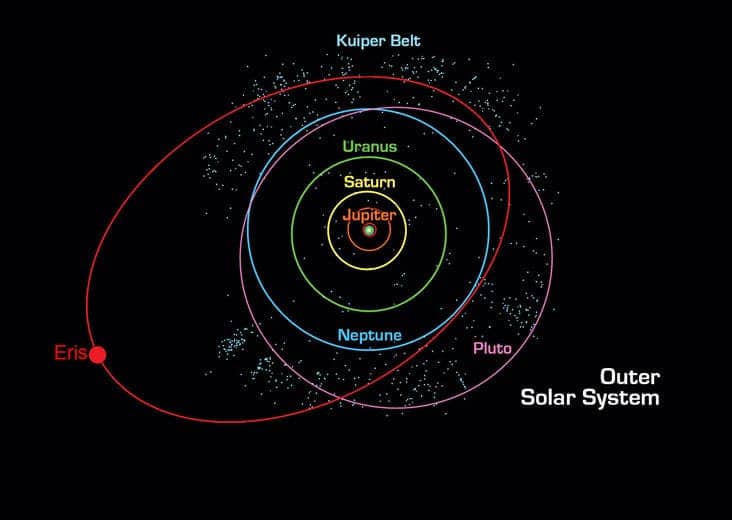
Image via NASA
Because of their small size and distant location, Kuiper Belt Objects are a challenge to spot from Earth. Infrared measurements from NASA’s space-based telescope, Spitzer, have helped to nail down sizes for the largest objects. In order to catch a better glimpse of these remote leftovers from the birth of the solar system, NASA places its hopes in the success of the New Horizons mission.
